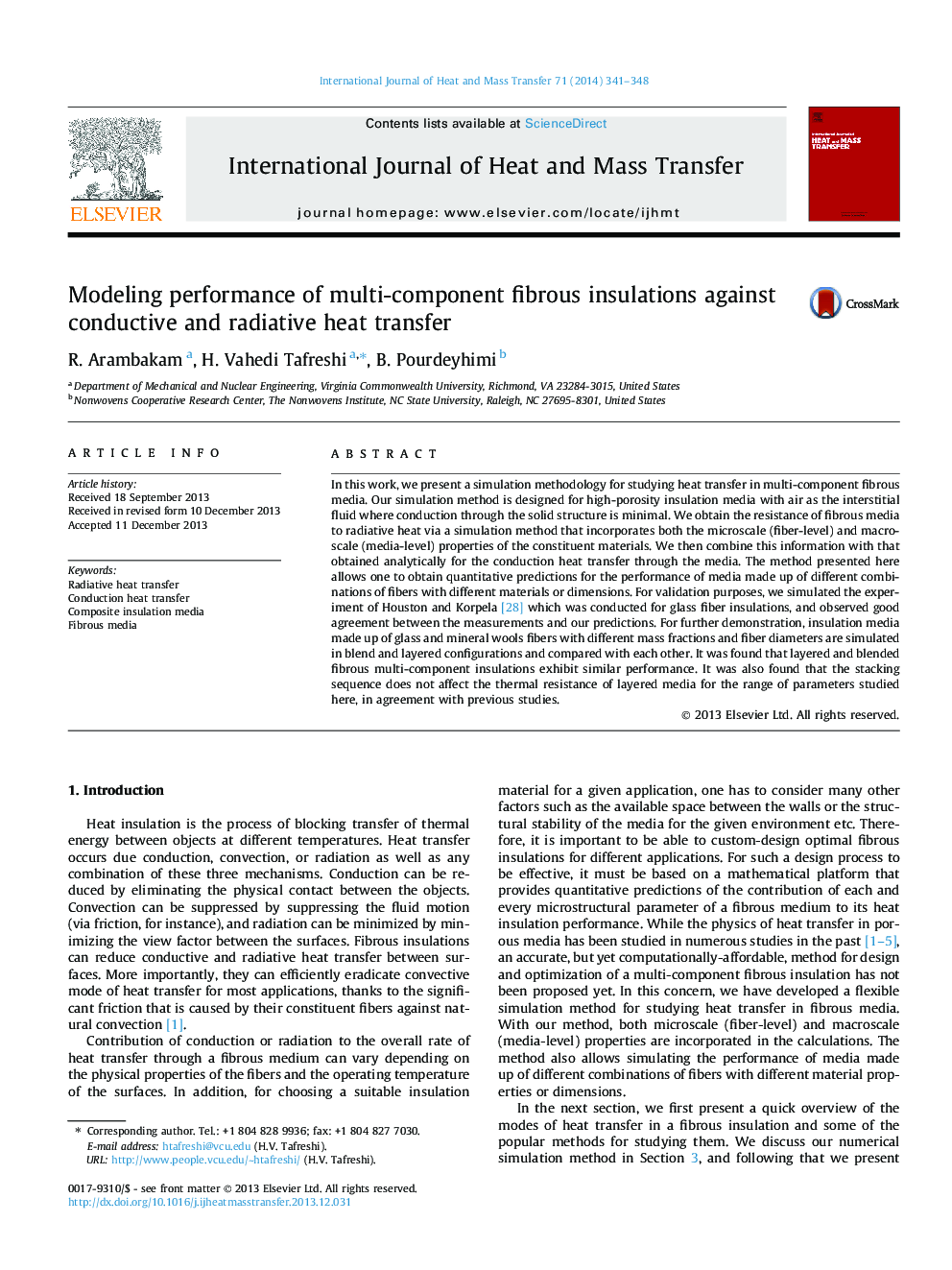| Article ID | Journal | Published Year | Pages | File Type |
|---|---|---|---|---|
| 7057612 | International Journal of Heat and Mass Transfer | 2014 | 8 Pages |
Abstract
In this work, we present a simulation methodology for studying heat transfer in multi-component fibrous media. Our simulation method is designed for high-porosity insulation media with air as the interstitial fluid where conduction through the solid structure is minimal. We obtain the resistance of fibrous media to radiative heat via a simulation method that incorporates both the microscale (fiber-level) and macroscale (media-level) properties of the constituent materials. We then combine this information with that obtained analytically for the conduction heat transfer through the media. The method presented here allows one to obtain quantitative predictions for the performance of media made up of different combinations of fibers with different materials or dimensions. For validation purposes, we simulated the experiment of Houston and Korpela [28] which was conducted for glass fiber insulations, and observed good agreement between the measurements and our predictions. For further demonstration, insulation media made up of glass and mineral wools fibers with different mass fractions and fiber diameters are simulated in blend and layered configurations and compared with each other. It was found that layered and blended fibrous multi-component insulations exhibit similar performance. It was also found that the stacking sequence does not affect the thermal resistance of layered media for the range of parameters studied here, in agreement with previous studies.
Related Topics
Physical Sciences and Engineering
Chemical Engineering
Fluid Flow and Transfer Processes
Authors
R. Arambakam, H. Vahedi Tafreshi, B. Pourdeyhimi,
